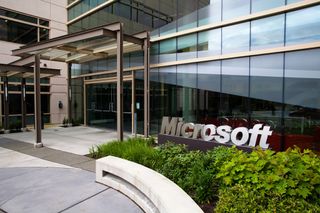Women account for 29 percent of Microsoft's workforce

In its latest diversity report, Microsoft says that it is employing more women now than ever. Female employees now account for 29 percent of the total Microsoft workforce, up from 24 percent last year. In addition to the general workforce, Microsoft says that the proportion of women senior executives also rose from 24 to 27 percent this year. Additionally, women and minorities also comprise a larger percentage of Microsoft's board of directors, up from 33 percent to 40 percent.
In terms of minorities, Microsoft says that 60.6 percent of its workforce is comprised of Caucasian, 28.9 percent Asian, 5.1 percent Hispanic/Latino, 3.5 percent American/African Black, 1.2 percent multi-racial, 0.5 pcerent American Indian/Alaskan native, and 0.3 percent Native Hawaiian/Pacific Islander.
The numbers Microsoft is reporting is very similar to rival Google, which stated that its workforce is made up of 30 percent women and 61 percent Caucasian.
Here is the email that Microsoft EVP of Human Resources Lisa Brummel sent to employees:
I've recently received a number of questions from employees due to the increased industry focus on diversity. I want to take this opportunity to share a report on diversity and inclusion at Microsoft with you.
Microsoft has a long history of substantial investment and engagement in promoting diversity and inclusion in our workforce. As part of that commitment, we started sharing data regarding the diversity of our employee population in 1998, and have publicly posted diversity data on https://www.windowscentral.com/e?link=https%3A%2F%2Fclick.linksynergy.com%2Fdeeplink%3Fid%3DkXQk6%252AivFEQ%26mid%3D24542%26u1%3DUUwpUdUnU25943%26murl%3Dhttp%253A%252F%252Fwww.microsoft.com%252Fen-us%252F&token=-O9BovZI on a voluntary basis since 2006. We recently updated our data to include our newest employees from Nokia and added additional detail. You can also find our updated diversity data here. As you look at the data, you will see that we are in generally the same position as others in our industry. In our 20+ years of committed efforts toward managing diversity and inclusion effectively, what we've learned is that diversity is not a finite goal that can simply be achieved, then "checked off" a list; it is a journey that requires constant self-assessment and recommitment.
Diversity and inclusion are a business imperative. Diversity needs to be a source of strength and competitive advantage for us. Our customer base is increasingly diverse. As our business evolves to focus more on end-to-end customer experiences, having a diverse employee base will better position Microsoft to anticipate, respond to and serve the needs of the changing marketplace. And representation itself is not enough – we must also create an inclusive work environment that enables us to capitalize on the diverse perspectives, ideas and innovative solutions of our employees.
Get the Windows Central Newsletter
All the latest news, reviews, and guides for Windows and Xbox diehards.
Over the past year, we made continued progress in increasing the diversity of our workforce and leadership, including:
- Growing the percentage of women in our global workforce from 24 to 29 percent.
- Increasing the number of Microsoft senior executive women and minorities from 24 to 27 percent.
- Raising the percentage of women and minorities on the Microsoft board of directors from 33 to 40 percent.
Have we made progress? Yes, we certainly have, and I am proud of the progress we have made. But we can all agree that much work remains to be done to increase the diversity of our company and the tech industry.
We have a strong history to build upon. We are expanding the pipeline for the next generation of technology leaders through science, technology, engineering, and math (STEM) programs like DigiGirlz, Blacks at Microsoft Minority Student Day, and our new global Microsoft YouthSpark program. Through these programs, we reached more than 100 million youth with opportunities for education, employment, and entrepreneurship. And, for the first time ever, we are now hiring our DigiGirlz as full-time employees, from a talent pool we fostered years ago. This proves the lasting impact of these programs. The pipeline we invested in years ago is now coming back to us – a result every company strives for. It is a slow process, but we are seeing momentum from our efforts.
This is just the beginning of the conversation. In the coming weeks, we will share more information about both new and ongoing strategic investments and partnerships to advance diversity and inclusion at Microsoft and in the tech industry. We will also detail new core priorities for leaders and people managers at Microsoft to make our company the absolute best place to work.
Lisa
What do you think Microsoft could do to attract more women and minority into tech? Is Microsoft doing enough when compared to rivals like Apple and Google to attract a more diversified workforce?
Source: ZDNet
Chuong's passion for gadgets began with the humble PDA. Since then, he has covered a range of consumer and enterprise devices, raning from smartphones to tablets, laptops to desktops and everything in between for publications like Pocketnow, Digital Trends, Wareable, Paste Magazine, and TechRadar in the past before joining the awesome team at Windows Central. Based in the San Francisco Bay Area, when not working, he likes exploring the diverse and eclectic food scene, taking short jaunts to wine country, soaking in the sun along California's coast, consuming news, and finding new hiking trails.

